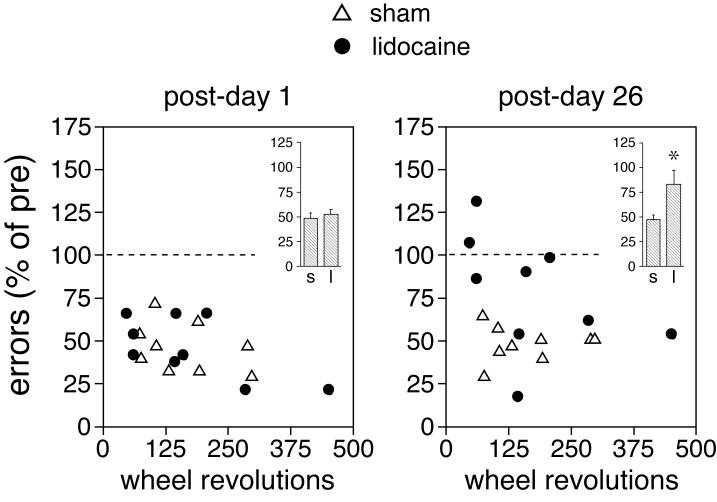Fig. 2.
Relationship between running (practicing) during the training and post-trial interference by lidocaine infusion. Scatter plots show the total number of wheel revolutions during the 2-day training and the number of performance errors (in percent of pre-test values) committed in the skill tests 1 day (left) and 26 days (right) after the training for individual animals that received intrastriatal infusions of lidocaine (full circles) or sham infusions (open triangles) after each training session plus a pre-trial injection of vehicle. Insets depict, for each time point, error scores (mean±SEM) for sham (s)- and lidocaine (l)-treated animals that showed less than 250 wheel revolutions during the training. * p<0.05.

